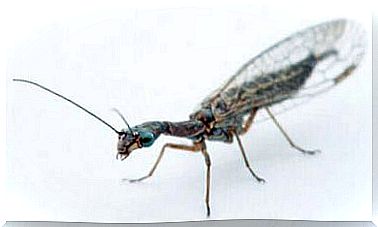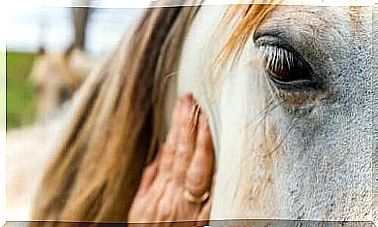Anxiety Disorders: Can Cats Suffer From It Too?
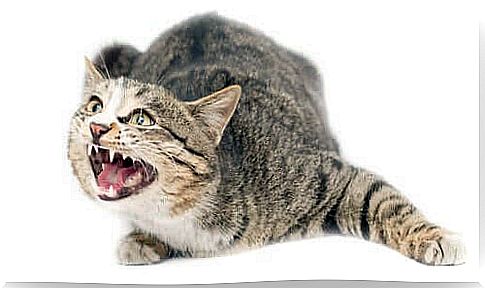
Anxiety disorders are unfortunately increasingly diagnosed by doctors today, as an ever increasing number of people suffer from them. Most of us are familiar with the symptoms of anxiety: excessive sweating, chest pain, difficulty concentrating, exhaustion, etc. In our modern society, we are constantly exposed to innumerable stimuli and we have diverse responsibilities. Therefore , chronic nervousness is a very common ailment.
But does this condition only occur in humans or can animals also suffer from it? Is it true that cats can have anxiety disorders too ?
Many doubt the emotional capacity of animals. But pets can also feel fear. After all, this feeling puts our body on alert and prepares it for dangerous situations. In other words, in nature this is vital to survival.
Every animal has its own perception
First of all, you should know that fear mainly depends on two factors:
- The nature of the stimulus that causes this sensation.
- The animal’s predisposition to anxiety disorders.
In addition, you should also keep in mind that animals, like humans, are individuals – with unique personalities and experiences of their own. As a result, some cats are more nervous and others are more relaxed and relaxed. What provokes indifference in one cat can lead to fear in another cat.
As a cat owner, you know your pet better than anyone. Therefore, the key to diagnosing anxiety disorders is observing your cat to understand its emotional characteristics. In addition , there are two general environmental factors that can lead to the development of anxiety disorders in cats.
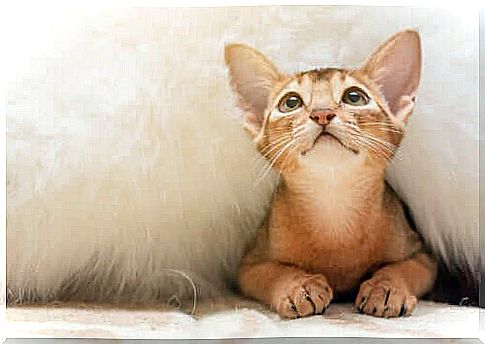
The physical environment
Some of the following physical factors can make cats more likely to develop anxiety disorders:
- The lack of places where space can be used in three dimensions. For example, scratching posts, climbing towers or furniture that you can climb on.
- Not enough individual space. In other words, a place where the cat can withdraw from people and other animals.
- Inadequate access to food and water. This is more common when several cats live in the same household. Competition among each other can lead to conflicts.
- Changes in the cat’s physical environment. A move, but also minor changes such as the constant relocation of the scratching posts, the food and water bowls, etc.
- Too monotonous an environment. Of course, you should respect your cat’s space. Nevertheless, cats always need new stimuli because they are naturally curious. Therefore, new toys and challenges are very important to mentally activate and stimulate the animals.
The social environment
There are also several social factors that could indicate a cat has anxiety disorders:
- A lack of harmony with other pets that live in the same household, regardless of whether it is a different cat or a different species of animal.
- Incorrect treatment of the animal by the owner. For example, too much physical contact, physical punishment, yelling, loud noises, etc.
- The arrival of a new family member. Many cats are sensitive when a child or newborn makes more noise than they were used to.
How can you tell if cats have anxiety disorders?
Just like in humans, an anxiety disorder in cats can manifest itself in a myriad of ways. In addition, there are both behavioral and physical symptoms.
The list of symptoms is almost endless. Still, there are a few changes to watch out for in your cat:
- Extremely aggressive behavior, increased grooming and spasmodic contractions of the back muscles of the animal. These symptoms suggest a pathology known as Feline Hyperesthesia Syndrome
. - Loss of appetite or anorexia
- Noticeable and unusual increase in the number of times the animal rested
- Marking by urination or feces outside the litter box
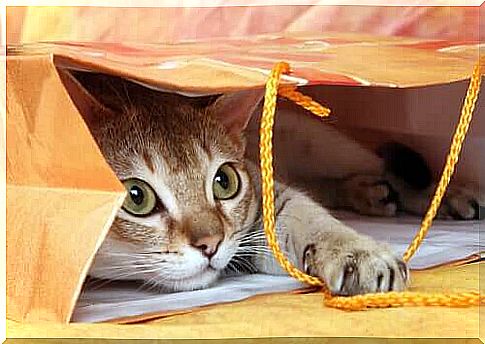
How are anxiety disorders in cats treated?
Because anxiety disorders can have many different causes, the complexity of treatment can vary.
Therefore, it is always important to know a cat’s history before adopting it. In addition, you should speak to your veterinarian if you notice any changes in your pet’s behavior.
If cats have generalized anxiety disorders (with no specific motive), it can be helpful to provide the animals with more stimuli. This keeps them busy and physical activity relieves stress. Good options are scratching posts, new toys, and interactions with the animal. In short, environmental enrichment is vital.
However, if these changes do not have the desired effect, there are a number of anti-anxiety pharmaceutical drugs available for cats. Of course, these anxiolytics must always be prescribed by a veterinarian and the animal must be checked regularly.






